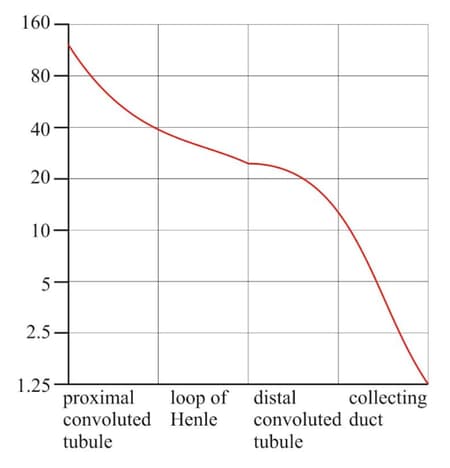Calculate the volume of filtrate that enters the loops of Henle from the proximal convoluted tubules each minute.

Important Questions on Homeostasis
Explain how each of this feature of the cells in the proximal convoluted tubules adapts them for the reabsorption of solutes:
microvilli
Explain how each of these features of the cells in the proximal convoluted tubules adapts them for the reabsorption of solutes:
many mitochondria
Explain how each of these features of the cells in the proximal convoluted tubules adapts them for the reabsorption of solutes:
folded basal membranes.
The figure given below shows the relative rate at which fluid flows through nephrons and collecting ducts. If water flows into an impermeable tube such as a hosepipe, it will flow out of the far end at the same rate that it flows in. However, this clearly does not happen in a nephron. Consider what happens in each region, and suggest an explanation for the shape of the graph.

